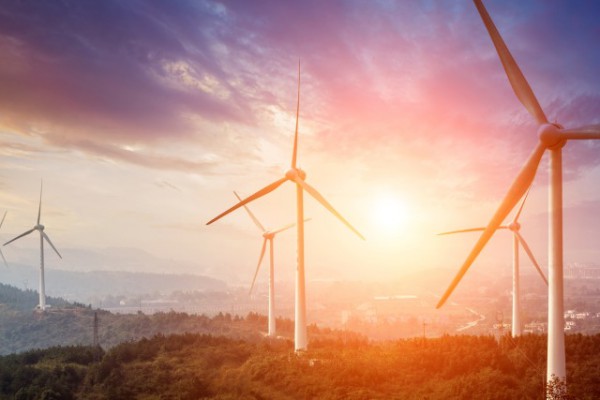The essential ingredient to manage the complexity of energy models: AI

In just a few years, energy management has become a real headache. Not only must the growth in electricity consumption be taken into account, but also the reduction in fossil fuels, and the increase in the production of renewable energies, knowing that they operate intermittently -- a complexity that cannot be resolved without massive data collection, high computing capacity and AI algorithms.
While global warming should force us to reduce our energy consumption, on July 15, 2021, the International Energy Agency (IEA) announced an increase in global electricity demand of five percent in 2021 and four percent in 2022. This is a trend that is not ready to be reversed, driven by the increasingly abundant and electricity-intensive technology era, by a global population that should reach 10 billion in 2050 or even by the development of metropolises and megacities that are still energy intensive.
In such a context, and in an attempt to limit greenhouse gasses without which we risk disappearing, companies in the energy sector are constantly innovating to deploy technologies that make it possible to produce and store greener energy, and use solutions such as AI, to optimize their energy production and distribution and anticipate consumption needs.
From centralized energy management to decentralization and diversity of energies
With the arrival of renewable energies along with the opening up to competition and global warming, the energy sector is undergoing a profound transformation. From an industry managed by a state agency and fueled by hydraulic dams, nuclear power plants and fossil energy sources (oil, coal, gas), today it is propelled into the midst of an ecosystem made up of a multitude of players offering fossil fuels and renewable energies (solar, wind, hydraulic, biomass, etc.) produced by private companies, local authorities or individuals -- a diversity of actors which greatly complicates the country's energy production and distribution. In effect, how can we manage energies with different characteristics and produce in a decentralized way? How do we integrate intermittent energies such as solar and wind power into a supply of fossil energies, when the use of which is also sought to be reduced?
AI, an essential tool for managing complexity
Faced with this complexity, the players in this multi-energy world have begun to deploy numerous AI projects. They have developed solutions to help them determine the optimal locations for solar panels or the most efficient wind turbine layouts. They use AI for the purpose of improving the operation of existing facilities and detecting anomalies by anticipating breakdowns on production sites or on the network and improving employee safety. They also rely on AI to better quantify and reduce their greenhouse gas emissions and other environmental and societal impacts. Finally, they use these technologies to better estimate the production of these different energies and anticipate the varied consumption of customers.
While companies are developing a large number of wind and solar projects, it is becoming imperative to be able to analyze and visualize the behavior of all of these installations in order to compare and optimize production performance, detect anomalies, anticipate maintenance and give recommendations to operators in the field. To succeed in this challenge, it is necessary to collect data in real time, to make it easily accessible in a collaborative space and to be able to manage these processes on a large scale by relying on the computing capacities of the cloud.
To succeed in the energy transition, we will need AI throughout the energy value chain, from production to consumption. It will work if and only if all people can help build these systems with AI. Indeed, AI should not remain exclusively reserved for data science experts, it must be designed jointly with people who know the world of energy to best meet the challenges and problems of this industry.
Finally, from a purely economic point of view, studies show that AI is a source of energy savings. For example, according to the IEA report, data collected in real time from smart lighting systems and other digital tools could reduce the energy consumption of buildings by 10 percent. This report also estimates that the 11 billion interconnected smart devices by 2040 would allow residents to better control their electricity consumption from the network and thus provide 185 GW of flexibility avoiding 270 billion dollars of investment in new electrical infrastructure.
From the production of these multi-energies to distribution, including the management of factories or the operation of production lines, AI has become a central element for optimizing the entire energy chain, whether in terms of production or consumption. Faced with global warming, the world of energy is changing and reinventing itself. In this complex and changing world, it will therefore be necessary to demonstrate great agility and seize the opportunity that AI represents to support this transition.
Image credit: zhangyang13576997233 / Shutterstock
Pierre Goutorbe is AI Solutions Director, Energy and Manufacturing at Dataiku.